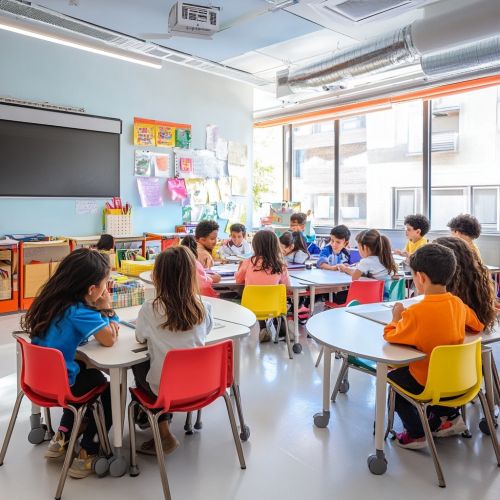National Education Policy 2020
Introduction
The National Education Policy 2020 (NEP 2020) is a comprehensive framework introduced by the Government of India, aimed at guiding the development of education in the country. This policy marks a significant shift from the previous National Policy on Education, 1986, and seeks to transform both school and higher education sectors. The NEP 2020 is designed to address the challenges of quality, equity, and access in education, aligning with the global educational standards and the needs of the 21st century.
Historical Context
The formulation of NEP 2020 was preceded by extensive consultations and discussions over several years. The need for a new policy was driven by the rapid changes in the global educational landscape and the evolving socio-economic conditions in India. The previous policy, formulated in 1986 and modified in 1992, had become outdated in addressing contemporary educational challenges. The NEP 2020 was developed through a participatory process involving various stakeholders, including educators, students, parents, and policymakers.
Key Features of NEP 2020
School Education
NEP 2020 introduces a new curricular structure, the 5+3+3+4 system, replacing the traditional 10+2 system. This structure aligns with the cognitive development stages of children:
- **Foundational Stage (5 years):** This includes three years of pre-primary education and two years of primary education. The focus is on play-based and activity-based learning.
- **Preparatory Stage (3 years):** Covering Grades 3 to 5, this stage emphasizes discovery-based and interactive classroom learning.
- **Middle Stage (3 years):** For Grades 6 to 8, the curriculum focuses on experiential learning in sciences, mathematics, arts, social sciences, and humanities.
- **Secondary Stage (4 years):** Covering Grades 9 to 12, this stage offers greater flexibility and choice of subjects to students, with a focus on critical thinking and multidisciplinary learning.
NEP 2020 also emphasizes the importance of mother tongue or regional languages as the medium of instruction until at least Grade 5, promoting multilingualism and cultural diversity.
Higher Education
The policy aims to increase the Gross Enrollment Ratio (GER) in higher education to 50% by 2035. It proposes the establishment of a Higher Education Commission of India (HECI) as a single overarching body for the entire higher education sector, excluding medical and legal education. The HECI will have four independent verticals:
- **National Higher Education Regulatory Council (NHERC):** For regulation.
- **National Accreditation Council (NAC):** For accreditation.
- **Higher Education Grants Council (HEGC):** For funding.
- **General Education Council (GEC):** For setting standards.
The NEP 2020 also encourages the establishment of Multidisciplinary Education and Research Universities (MERUs) and the promotion of holistic and multidisciplinary education.
Vocational Education
Vocational education is integrated into all educational institutions from Grade 6 onwards, with a focus on practical training and internships. The policy aims to ensure that at least 50% of learners have exposure to vocational education by 2025.
Teacher Education
The policy emphasizes the need for high-quality teacher education and proposes a four-year integrated B.Ed. degree as the minimum qualification for teachers by 2030. It also highlights the importance of continuous professional development and the establishment of a National Professional Standards for Teachers (NPST).


Implementation Strategy
The implementation of NEP 2020 is envisioned to be carried out in phases, with a focus on capacity building, resource allocation, and stakeholder engagement. The policy outlines the roles and responsibilities of various government bodies, educational institutions, and other stakeholders in ensuring effective implementation.
Financial Implications
The NEP 2020 recommends increasing public investment in education to reach 6% of GDP at the earliest. This includes investments in infrastructure, teacher training, digital learning resources, and research and innovation.
Digital and Online Education
Recognizing the potential of technology in education, NEP 2020 emphasizes the integration of digital tools and platforms in teaching and learning processes. It proposes the creation of a National Educational Technology Forum (NETF) to facilitate the exchange of ideas and best practices in the use of technology in education.
Challenges and Criticisms
Despite its ambitious goals, NEP 2020 faces several challenges in implementation. These include the need for substantial financial resources, the capacity of institutions to adapt to new pedagogical approaches, and the need for systemic reforms in governance and administration. Critics have also raised concerns about the feasibility of implementing the policy's recommendations, particularly in rural and under-resourced areas.
Conclusion
The National Education Policy 2020 represents a significant step towards transforming the educational landscape in India. By addressing the needs of learners and aligning with global standards, the policy aims to create an inclusive, equitable, and vibrant knowledge society. However, its success will depend on effective implementation, adequate funding, and the commitment of all stakeholders to the vision of a reimagined education system.
